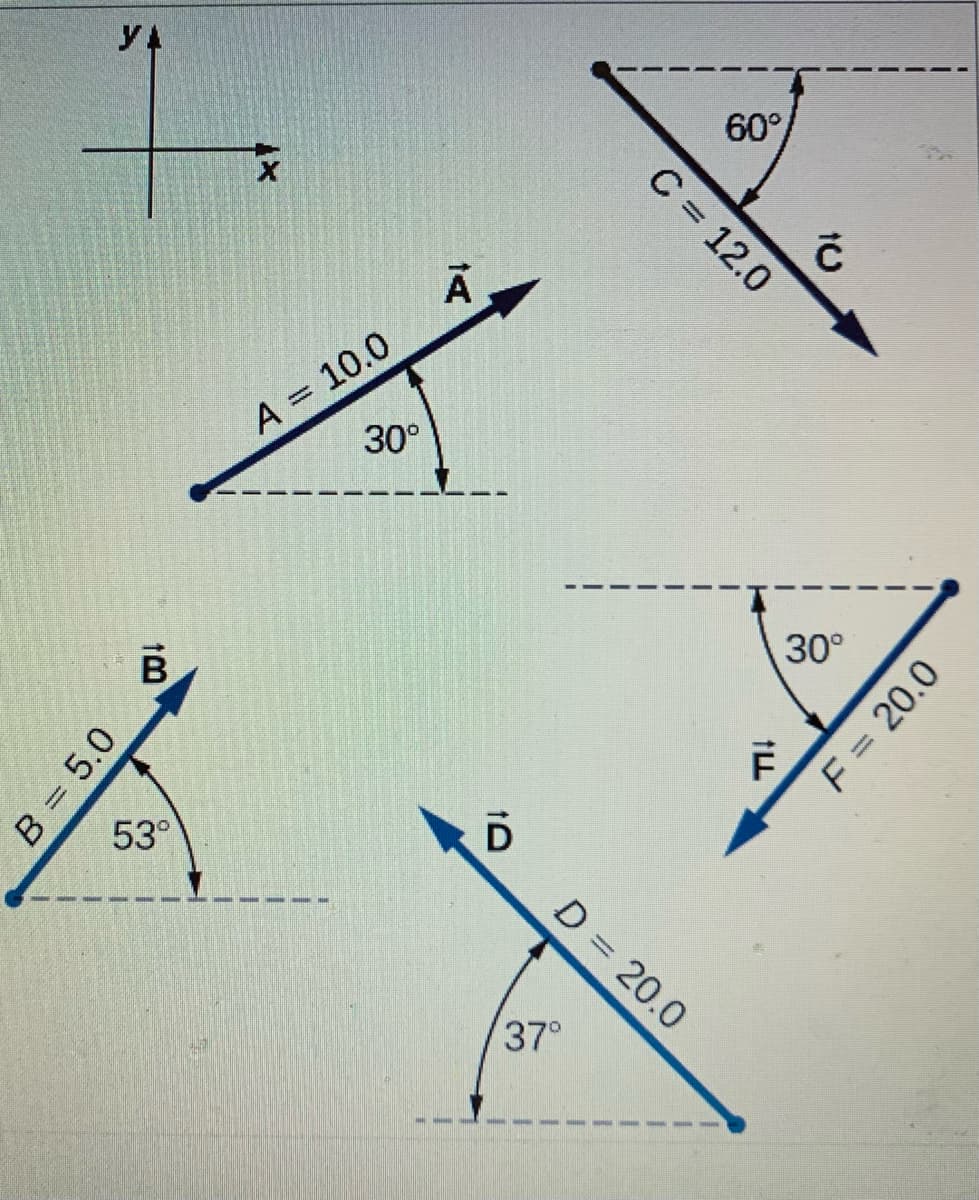An Introduction to Physical Science
14th Edition
ISBN:9781305079137
Author:James Shipman, Jerry D. Wilson, Charles A. Higgins, Omar Torres
Publisher:James Shipman, Jerry D. Wilson, Charles A. Higgins, Omar Torres
Chapter19: The Atmosphere
Section: Chapter Questions
Problem 5MC
Related questions
Question
Practice Pack

Transcribed Image Text:yA
60°
A = 10.0
30°
30°
53°
D = 20.0
37°
C = 12.0
10
B = 5.0
F = 20.0

Transcribed Image Text:% Part (e) What is the magnitude of the resultant vector: D+F?
sin()
cos()
tan()
7
8
9.
HOME
cotan()
asin()
acos()
E
4
atan()
acotan()
sinh()
3
END
cosh()
O Degrees
tanh()
cotanh()
Radians
VOl BACKSPACE
CLEAR
EEL
1,
Expert Solution
This question has been solved!
Explore an expertly crafted, step-by-step solution for a thorough understanding of key concepts.
Includes step-by-step video
Learn your way
Includes step-by-step video
Step by step
Solved in 2 steps with 1 images

Knowledge Booster
Learn more about
Need a deep-dive on the concept behind this application? Look no further. Learn more about this topic, physics and related others by exploring similar questions and additional content below.Recommended textbooks for you

An Introduction to Physical Science
Physics
ISBN:
9781305079137
Author:
James Shipman, Jerry D. Wilson, Charles A. Higgins, Omar Torres
Publisher:
Cengage Learning

An Introduction to Physical Science
Physics
ISBN:
9781305079137
Author:
James Shipman, Jerry D. Wilson, Charles A. Higgins, Omar Torres
Publisher:
Cengage Learning